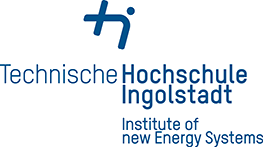Lessons learnt
The transforming power of strong partnership between academia and industry:
Participating in the series of workshops on the German model of University of Applied Sciences has been an eye opener on what can be achieved when universities work closely with industry. While currently we have many universities established and existing alongside industries, there is still some room to apply strategies that can strengthen collaborations. It is important for institutions to find ways to closely align their efforts to support their different missions and goals, and contribute more strongly to the growth of the economy. Clearly the German economy has grown tremedously over the years as a result of applying this model.
UAS model as an opportunity to add value to existing academic and research activities:
Without doubt many Kenyan universities have invested significant efforts to establish numerous academic programmes. Staff and post graduate students routinely conduct research that is often done in collaboration with external stakeholders. In most institutions academic departments are expected to consult industry when developing new programmes or revising existing curricula. These existing activities and contact points with industry present opportunities for exploring and applying the UAS model through measures that can add value at minimal extra cost to significantly increase outputs, institutional performance and impact on the economy.
UAS model needs a mindset change:
Without doubt Kenyan universities have considerable capacity to already start taking the necessary steps towards application of the UAS model. Departments with academic programmes in STEM areas that are usually associated with technology development would be an appropriate place to start. However, there are some differences that need to be appreciated between the Kenyan and Germany university systems. To start with Kenyan universities apply the traditional model with a large number of study programmes in many fields of specialisation. The UAS model typically focuses on a narrow range of study areas where competencies are concentrated and capacity established for high performance, e.g. labs, human resources, partnerships. This ’specialisation oriented‘ approach may not be immediately rapidly embraced and may in some cases face difficulties obtaining the full support of university management. In particular, it is important to understand the operational context of Kenyan universities, especially the public ones, where resources are limiting and the influence of government policy direction is significant. To increase the possibility of successful introduction of the UAS model in Kenya, and without causing disruption to current set ups, it would be necessary to address issues of mindsets, first to address any uncertainities regarding the foreseen outcomes of the model and diffuse any concerns/fears on potential disruptions. It is important to address in particular heads of departments, deans fo schools and top university leadership.
Other enabling factors for the UAS model:
The German UAS model has succeeded because other factors have also been considered to support its implementation. An example is the establishment of a pedagogy/ professors training institute in the Bayern region. This center helps to ensure institutions and their personnel in the UAS network have a common understanding and approach to teaching, research and engagment with industry with a focus on the ‚applied aspects‘ of their outputs. This concept of training academic staff is also gaining root in Kenya but is not yet centralised, rather each institution has its own arrangements. It may therefore be eneficial to consider the possibility of establishing a centrally coordinated mechanism within the East African UAS network of excellence.
Another important aspect noted is the establishment of Bayern region office that supports institutions to compete effectively for grants and research funding from other parts of the world. This office plays a central role in ensuring that institituions are effectively netwroked and sustainably gaining access to the resources they need to continue excelling in their academic and research activities. Realising that lack of funding is a critical factor in this endeavor, the EA-UAS excellence network may also explore the possibility of triggering such an initiative, perhaps anchored at the National Research Fund.

Leave A Comment